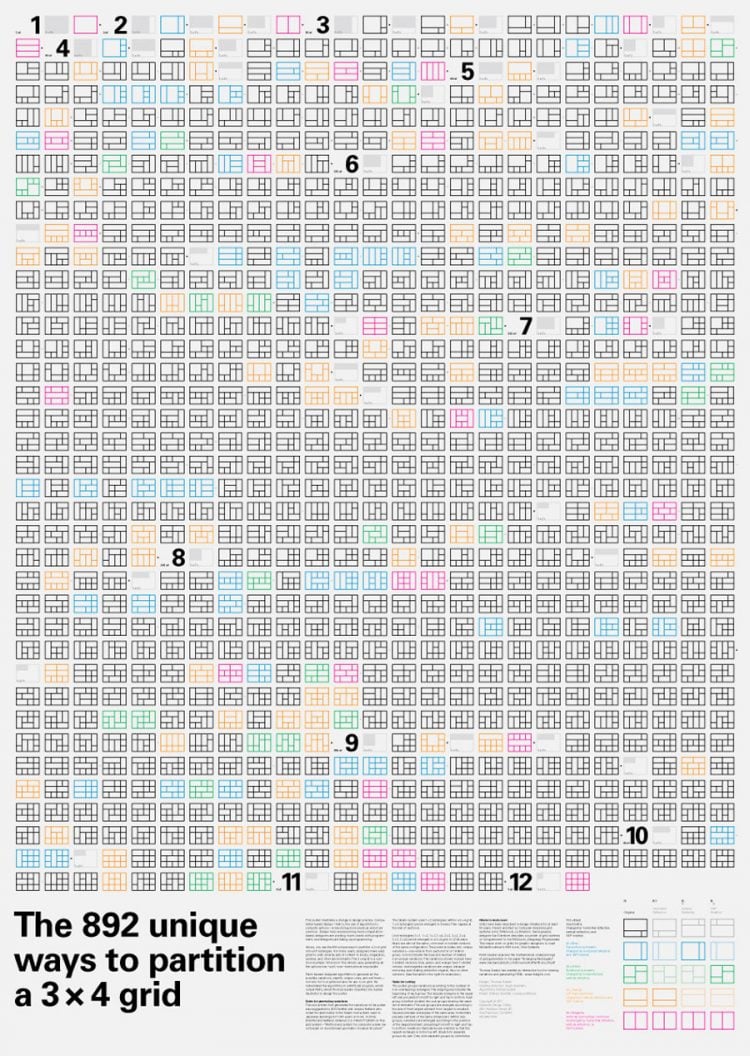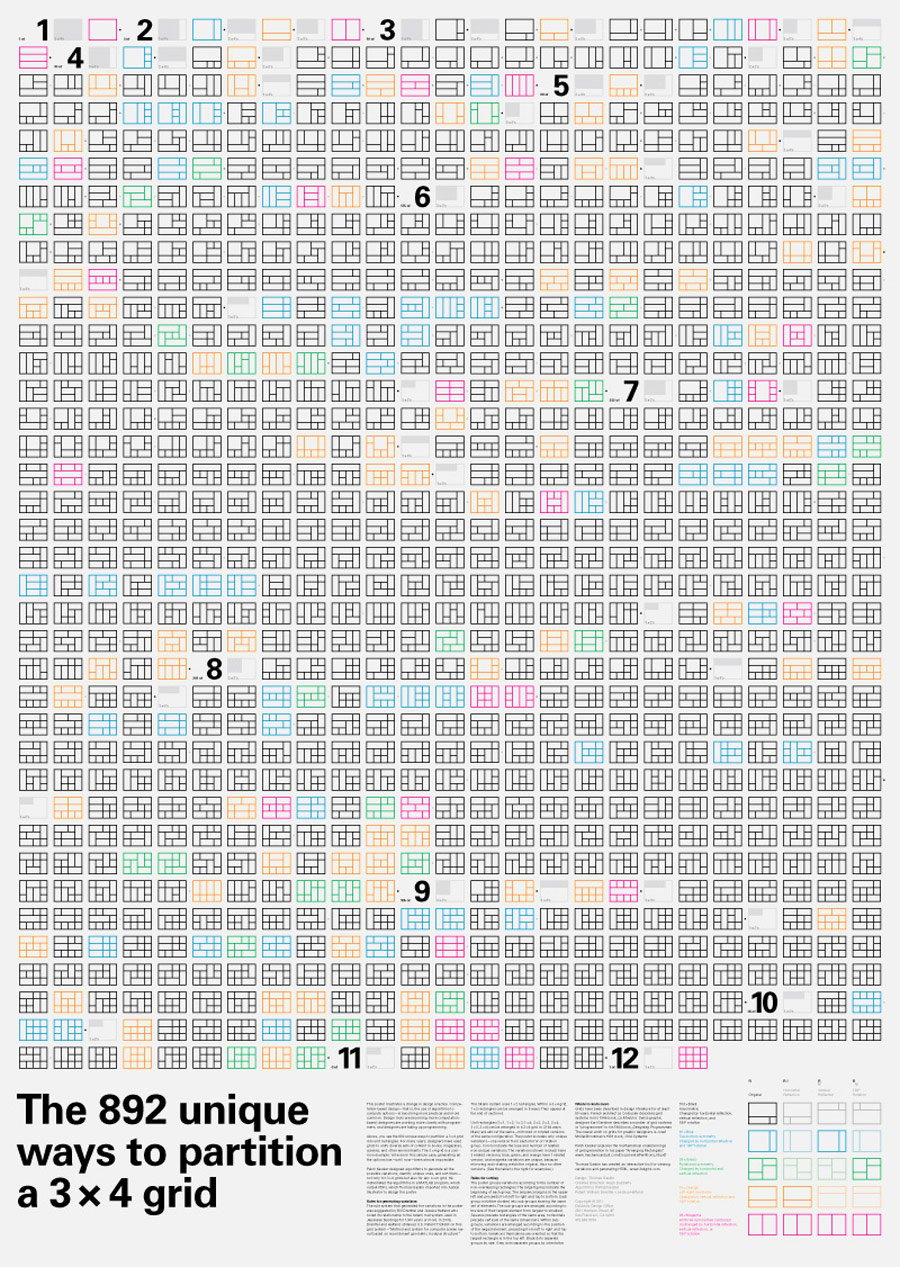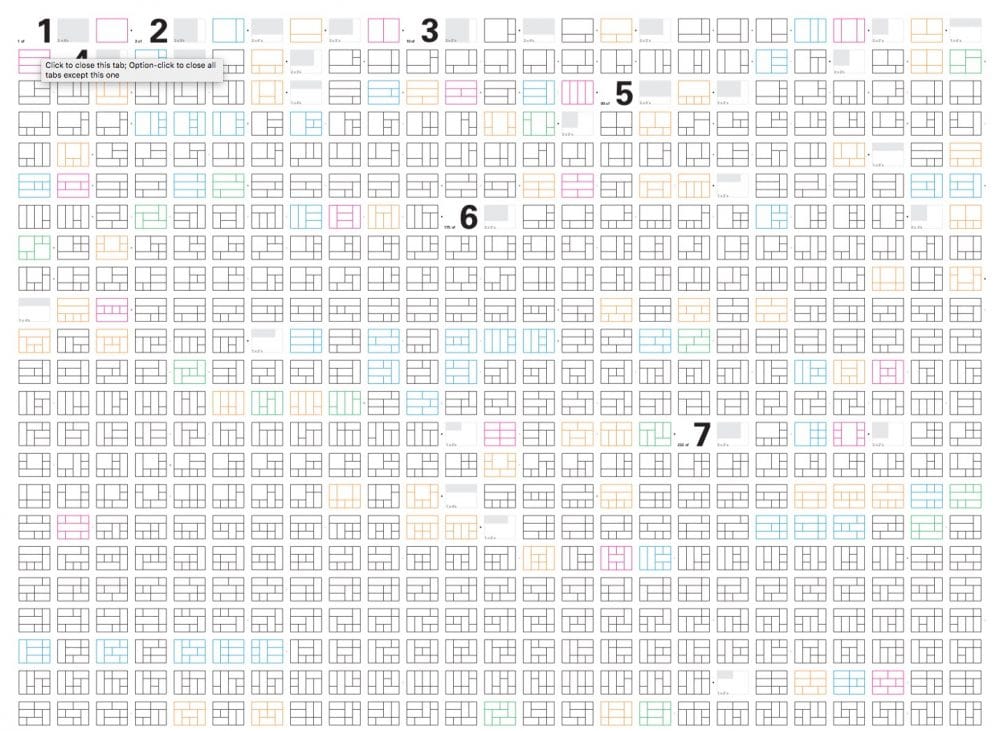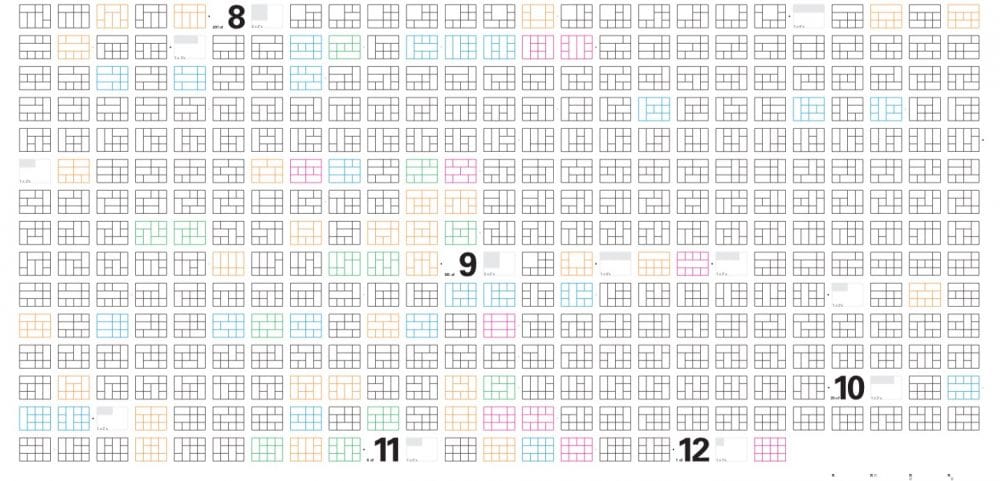
The 892 Unique Ways to Partition a 3 x 4 Grid Design Poster for Download by Thomas Gaskin
As a graphic designer you’ll know how important grid design can be, but did you know there were 892 unique ways to partition a 3×4 grid? Well now you do, and Thomas Gaskin has designed this brilliant PDF showing all the variations.
This poster was designed using computation-based design to work out all the 892 ways to partition a grid into rectangles.
Apparently, even in this simple case, a designer tasked with generating all these options has—until now—been almost impossible.
It’s well worth visiting the original website, over on Dubberly, where I found this article, as there’s a super interesting write-up on this use of computation-based grid design.
Dubberly: Patch Kessler designed algorithms to generate all the possible variations, identify unique ones, and sort them—not only for 3 × 4 grids but also for any n × m grid. He instantiated the algorithms in a MATLAB program, which output PDFs, which Thomas Gaskin imported into Adobe Illustrator to design the poster.
Download PDF
Grid Design Credits
Designed by Thomas Gaskin. Creative direction by Hugh Dubberly. Algorithms by Patrick Kessler. Patent belongs to William Drenttel + Jessica Helfand.
Dubberly: This poster illustrates a change in design practice. Computation-based design—that is, the use of algorithms to compute options—is becoming more practical and more common. Design tools are becoming more computation-based; designers are working more closely with programmers; and designers are taking up programming.
Above, you see the 892 unique ways to partition a 3 × 4 grid into unit rectangles. For many years, designers have used grids to unify diverse sets of content in books, magazines, screens, and other environments. The 3 × 4 grid is a common example. Yet even in this simple case, generating all the options has—until now—been almost impossible.
Patch Kessler designed algorithms to generate all the possible variations, identify unique ones, and sort them—not only for 3 × 4 grids but also for any n × m grid. He instantiated the algorithms in a MATLAB program, which output PDFs, which Thomas Gaskin imported into Adobe Illustrator to design the poster.



